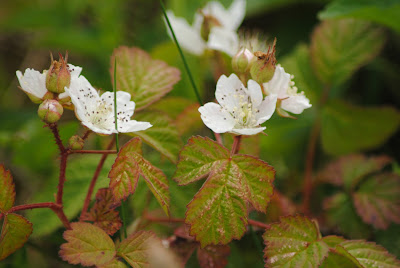This blog may help people explore some of the 'hidden' issues involved in certain media treatments of environmental and scientific issues. Using personal digital images, it's also intended to emphasise seasonal (and other) changes in natural history of the Swansea (South Wales) area. The material should help participants in field-based modules and people generally interested in the natural world. The views are wholly those of the author.
Wednesday, 8 June 2022
Seeing the Changes 1635
Lots of flowers out in Crymlyn Burrows. Slender knapweed (Centaurea debeauxii); Black knapweed (Centaurea nigra); Yarrow (Achillea millefolium); Viper's bugloss (Echium vulgare); Pyramidal orchid (Anacamptis pyrimidalis); Tufted vetch (Vicia cracca); Stone bramble (Rubus saxatilis); Yellow rattle (Rhinanthus minor); Kidney vetch (Anthyllis vulneraria); Orpine (Sedum telephium); Biting stonecrop (Sedum acre); Sea bindweed (Calystegia soldanella); Rest harrow (Ononis repens) and Large-flowered evening primrose (Oenothera erythrosepala).
Subscribe to:
Post Comments (Atom)
-
I n the UK and US, a pparently popular and successful vegan/vegetarian restaurants are reportedly closing or adding meat to their menus ( ...
-
Early ripening fruit may seem convenient but some folk think it confirms environmental stress. There's also a possibility th...















%20mating%20NWCW.jpg)


No comments:
Post a Comment